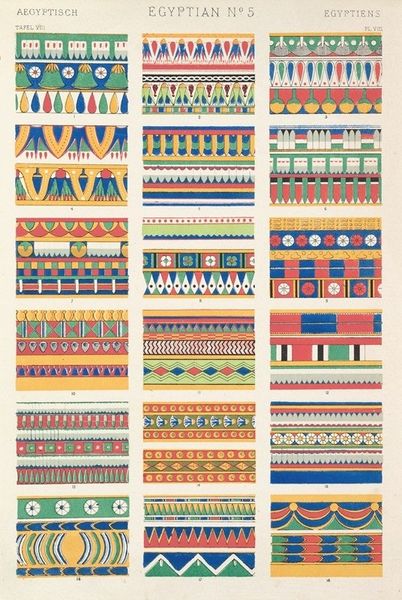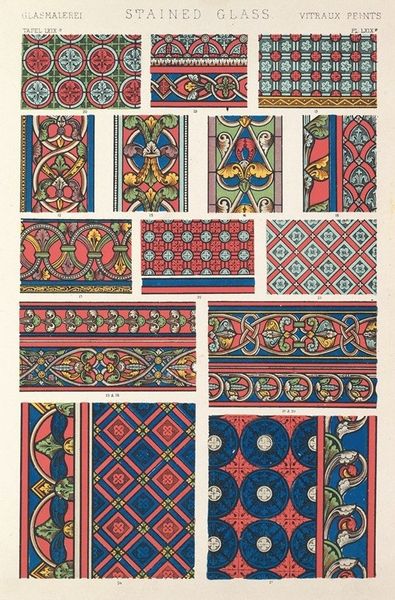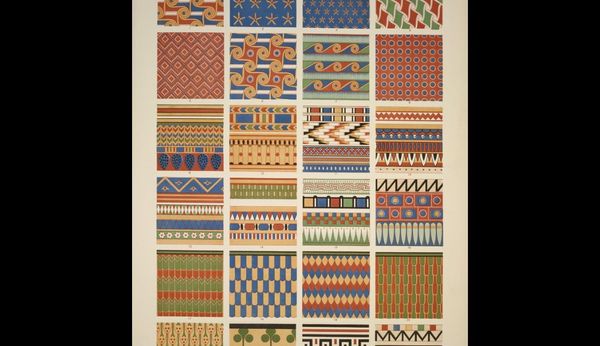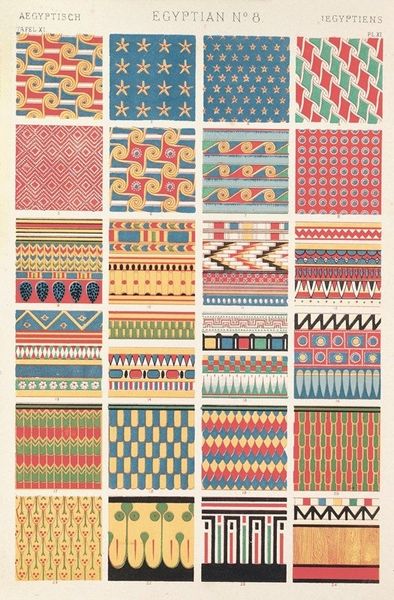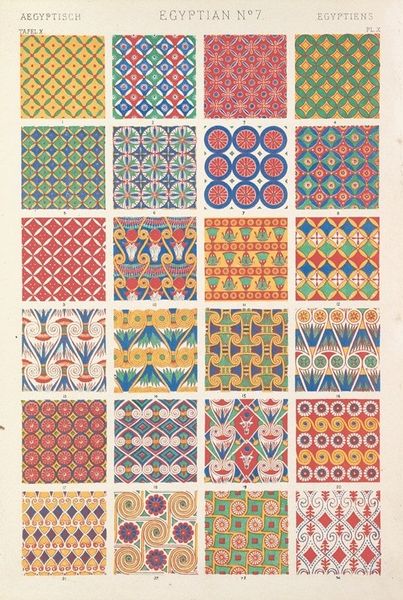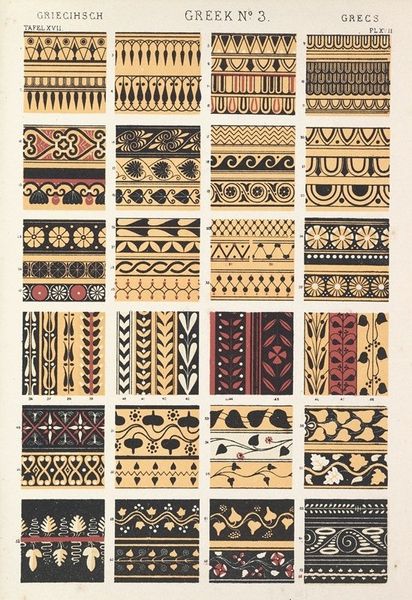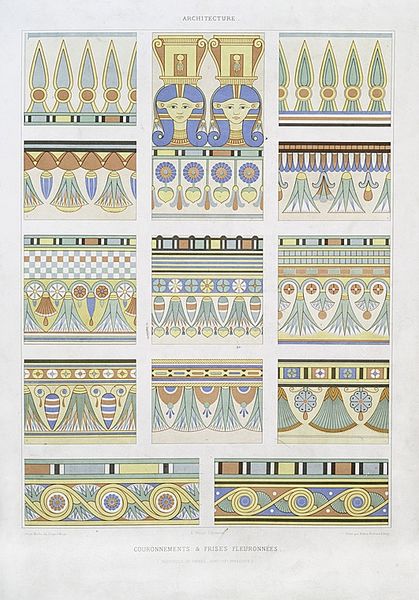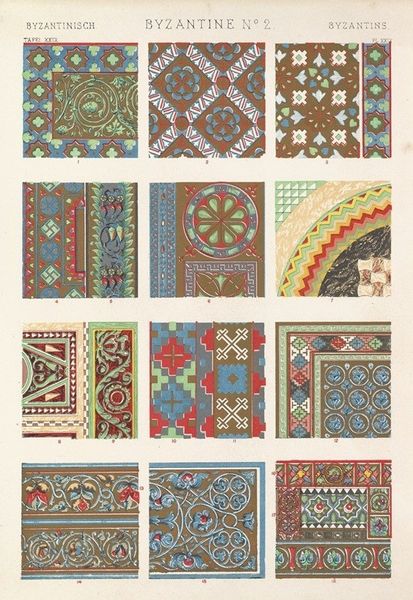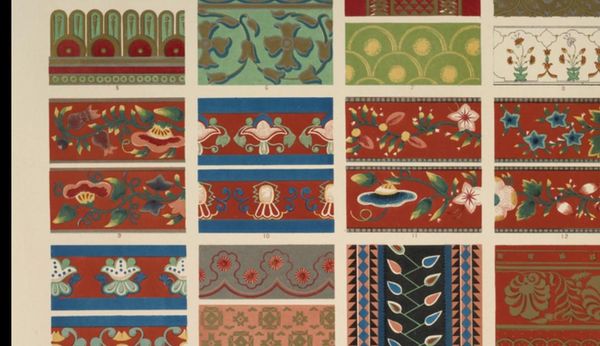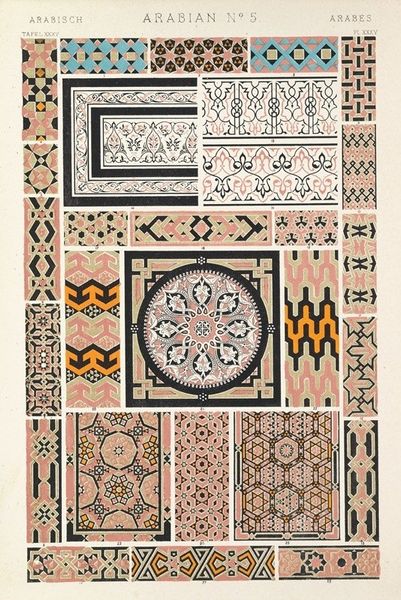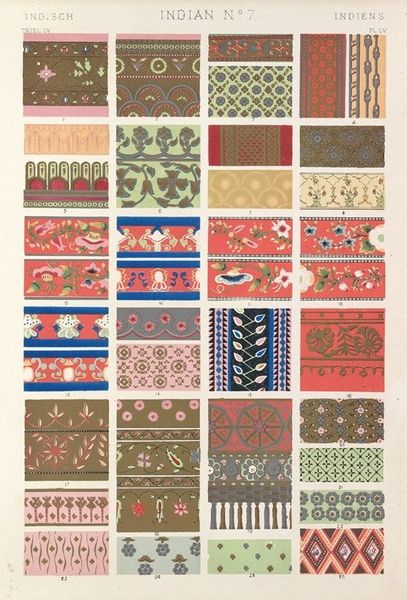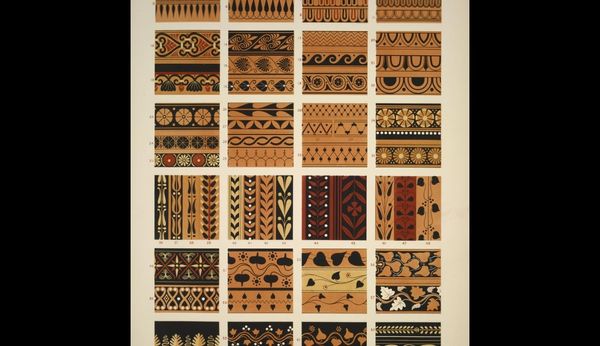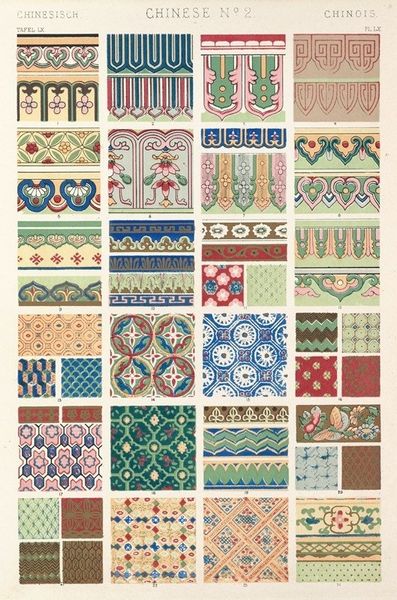
# print
#
geometric
#
textile design
#
decorative-art
Copyright: Public Domain: Artvee
Curator: At first glance, this image feels meticulously balanced, yet strangely unsettling. So many patterns vying for attention. Editor: You’re looking at Owen Jones' "Egyptian No. 4", a chromolithograph from 1856. Jones was incredibly influential in the decorative arts, especially his work on ornament. Think about its original context; it would have been part of a larger publication used by manufacturers, architects, and designers to incorporate historical styles. Curator: Absolutely. The printing process here is so key—chromolithography allowed for vibrant color reproduction at a relatively affordable cost, broadening the accessibility and influence of designs like these. And that reproducibility directly speaks to wider trends in Victorian consumption, right? Editor: The colors and geometry strike me immediately. Note how the visual syntax seems rigidly organized at first, based on verticality, symmetry, and limited color palettes – reds, blues, yellows. Each of the 35 registers has clear compositional elements but somehow fail to synthesize into a complete overall scheme. Curator: Exactly! We have to consider who this artwork served: The decorative elements would feed industrial manufacturing. By examining similar works in publications such as "The Grammar of Ornament", you quickly begin to question the role of the individual artist amidst increasingly industrial means of production and design. Editor: Jones, through his organization of each band of ornament, explores themes of historical references. But does that also reinforce Victorian-era imperial power dynamics, where the value lies in extracting and repackaging aesthetics from other cultures and bending the rules of style? Curator: Yes, these are commercially oriented. This piece highlights the consumption habits, the manufacturing and printing, and its effect. This isn’t art made for art's sake, but art as a tool in a larger system. Editor: This re-examination gives a different perspective on the artwork! What seemed at first like a formal exercise in the decorative now reveals something darker about society. Curator: Right! And hopefully, visitors will come away thinking not just about the beautiful patterns, but also about the complex forces that shaped their creation and consumption.
Comments
No comments
Be the first to comment and join the conversation on the ultimate creative platform.
